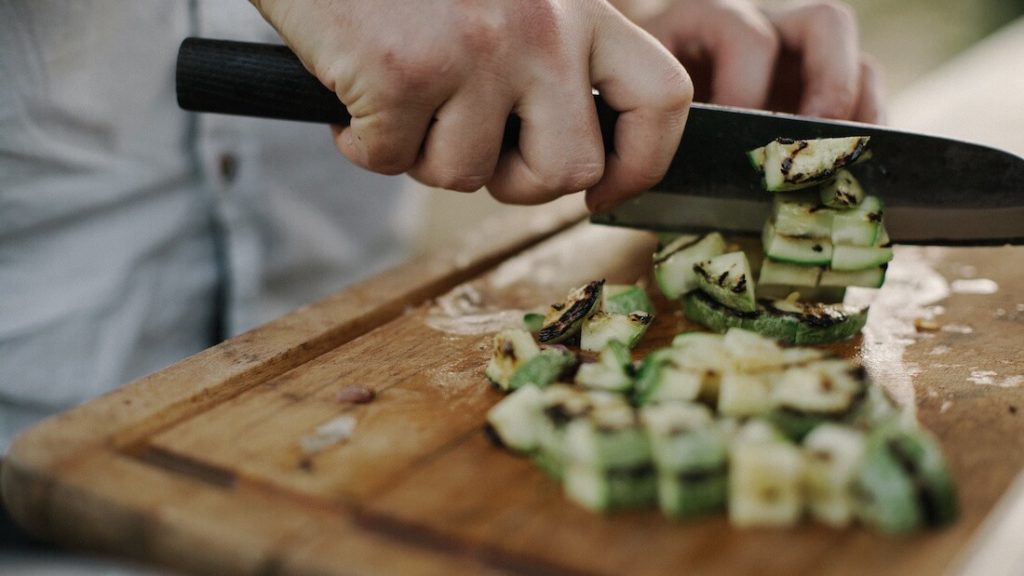One of the great American myths we are taught from childhood is that competition breeds efficiency. In high school I recall learning about Adam Smith’s Invisible Hand and the free market, which, if left unfettered, magically achieves a perfect equilibrium between supply and demand, consumer and producer. The reality is that capitalism has engulfed us in a sea of unusable junk that we don’t need and have no idea how to dispose of, as well as staggering surpluses and shortages driven by the short-term gain of some at the expense of millions of Americans who can’t afford decent food and other necessities. Competition in the private healthcare market has caused out-of-control costs and overall poorer outcomes than other industrialized countries. Meanwhile, the food industry thrives on a dysfunctional system in which wasting food is actually rewarded, something we rarely hear about.
Many of us may have missed the news in the Wall Street Journal that the dairy industry overproduced and dumped 43 million gallons of milk at the end of 2016. Corporate America insists it performs best when allowed to “self-regulate,” that is, until they make some recklessly irresponsible missteps that spell financial disaster. At such times, our government steps in to bail them out with our tax dollars. In this case, the USDA saved the day by buying up 20 million dollars worth of cheese, taking on the task of peddling addictive animal fats rather than, say, bolstering the plant-based dairy market as a healthier alternative. Animals, human health, and the environment lose, and the dairy industry wins. And so the engine of waste continues.
Thankfully, there is growing evidence and resistance to this culture of waste protected by powerful public and private interests. Perhaps the most high profile effort targeting consumers on food waste awareness and solutions is the Ad Council’s Save the Food campaign which leads with the startling statistic, “forty percent of food in America is wasted.” While it doesn’t overtly urge consumers to eat less animal products, it does show how much water and other resources are wasted per food type, with meat and dairy on the highest end of that spectrum.

While consumer waste is a huge problem, animal production is unnecessarily wasting an enormous amount of natural resources as well as a major contributor to the most serious environmental problems we face. A recent report shows that if U.S. farmers took all the land currently devoted to raising cattle, pigs, and chickens and used it to grow plants instead, they could sustain more than twice as many people as they do now, or an additional 390 million hungry mouths, according to the report published in the Proceedings of the National Academy of Sciences.
The global impact of raising animals has also been thoroughly assessed in an unprecedented new report which finds that eliminating animal agriculture would result in a 75% reduction in overall farmland use and still feed the world. Other revelations from the study show that “meat and dairy provide just 18% of calories and 37% of protein, while using the vast majority – 83% – of farmland and produces 60% of agriculture’s greenhouse gas emissions.” What’s worse, the study finds that “loss of wild areas to agriculture is the leading cause of the current mass extinction of wildlife.”

In evaluating the impact of food waste we rarely if ever consider the lives who were “wasted” and those who, while alive, suffered in vain. Even a suspicion of a disease outbreak in a large flock or herd of animals can lead to the farmer exterminating the entire population (depopulation). This is especially common in the poultry industry where countless birds are either gassed or suffocated to death with firefighting foam. Thousands of others burn to death in fires trapped inside warehouses and barns. At least half of all chicks born to hatcheries are considered waste product and killed at birth. Hens bred for egg laying will become waste product at just a fraction of their natural lifespan, after just 12 to 18 months of life when their egg laying begins to decline. Millions of male calves born into the dairy industry are immediately waste product and either sold for slaughter or simply thrown in dead piles to die. Female dairy cows become waste product after 4 to 6 years when their milk production begins to decline. The weak, injured and diseased will not receive special care but rather be mercilessly discarded as unmarketable waste.

An industry based on violence and killing regards only animals that remain productive as not waste. Everyone else is a waste of time and resources to keep alive. No amount of reform or welfare rhetoric will ever change this fundamental fact of running a business.
Overall, vegan activists have a compelling case for waste reduction through the replacement of animal products with other plant-based meat, dairy and egg products. This is one of many potential campaigns that can influence the public’s hearts and minds in our favor. Our success depends on our ability to build a grassroots movement against the systems of exploitation and the culture that sanctions it. Let’s dig in our heels and get to work!
About Robert Grillo: https://robertgrillo.com/aboutme/


